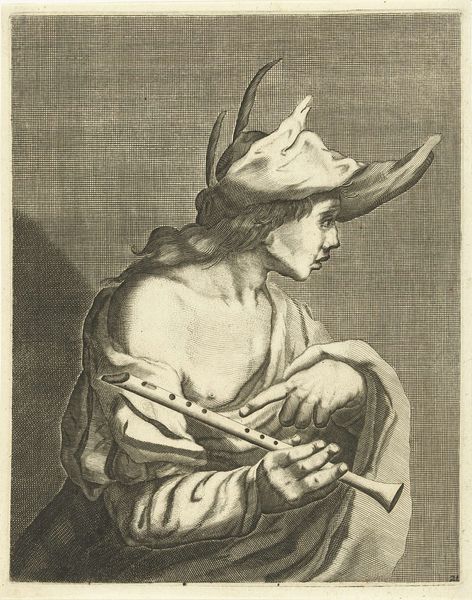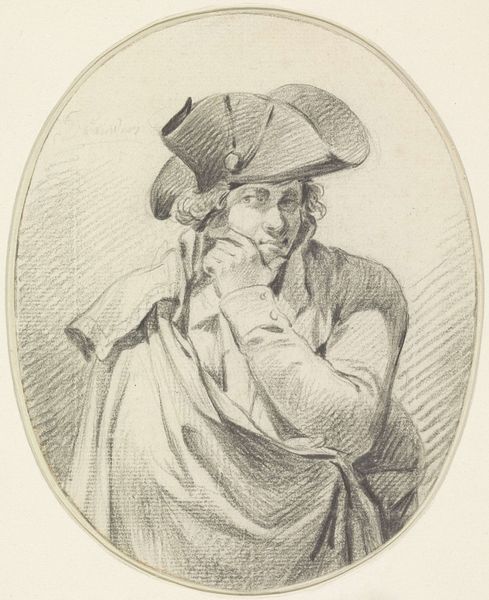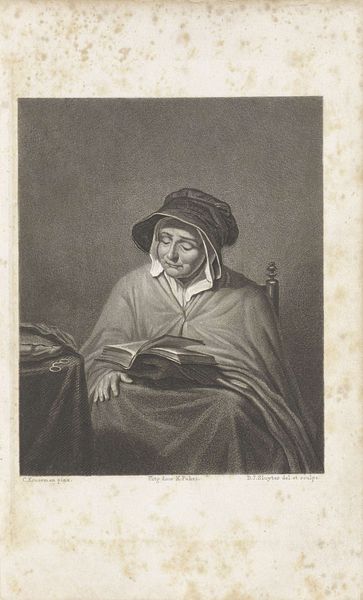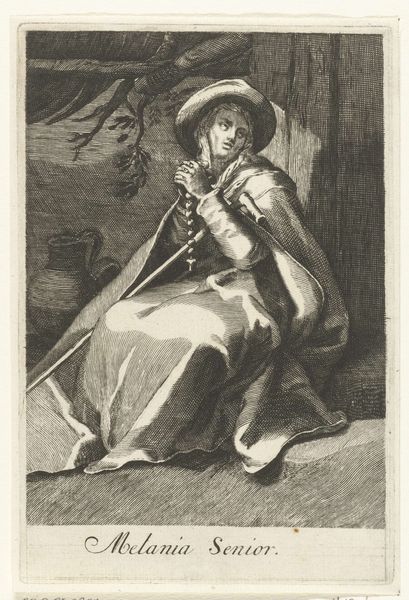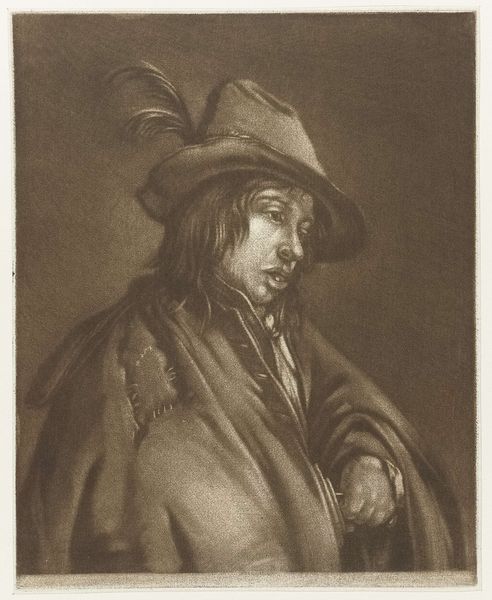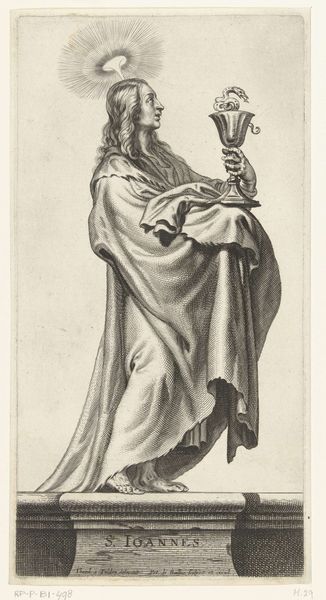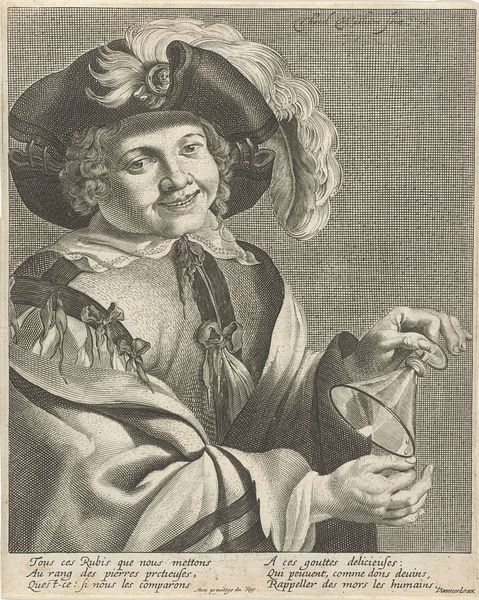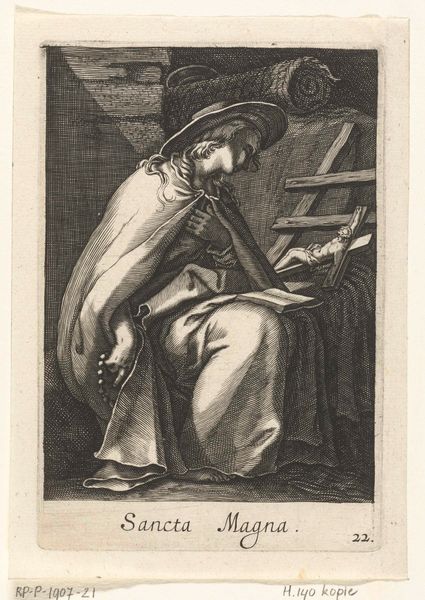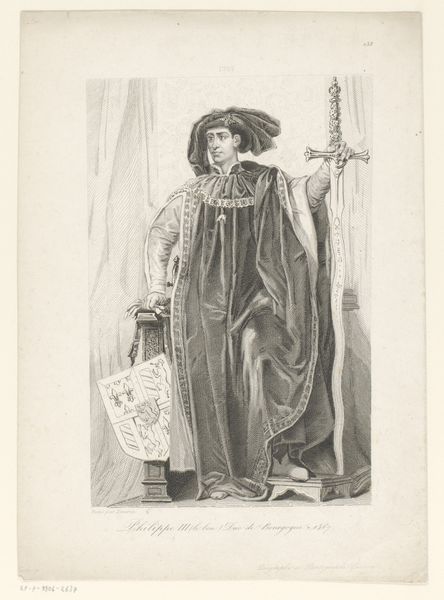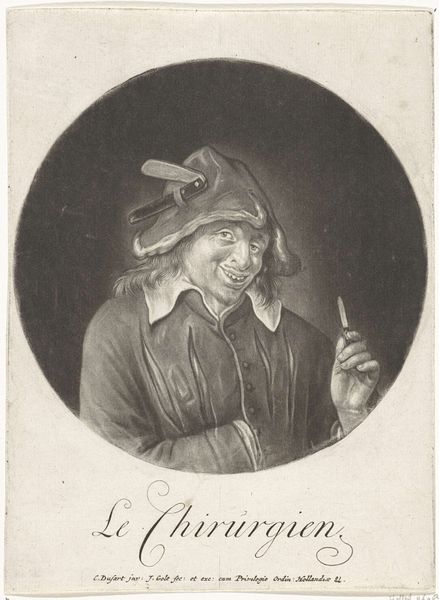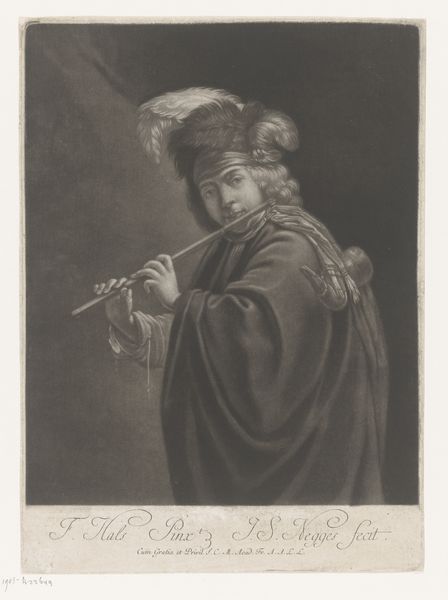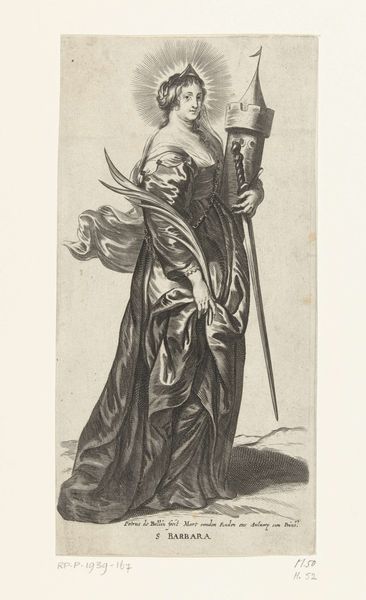
drawing, etching, ink, pencil, pen
#
portrait
#
drawing
#
baroque
#
etching
#
caricature
#
ink
#
pencil
#
pen
#
genre-painting
#
portrait art
Dimensions: height 192 mm, width 158 mm
Copyright: Rijks Museum: Open Domain
Curator: Here we have "Fluitspeler," or "Flute Player," created between 1683 and 1755 by Jan Verkolje the Younger. It appears to be an etching, a type of printmaking that was quite popular in that era. Editor: My first impression? The artist definitely had a sense of humor. The fellow's expression is somewhat… quizzical, isn't it? There is something almost satirical in the execution. Curator: That's a perceptive observation. Verkolje, despite his aristocratic portraiture, often engaged in genre painting, capturing everyday life and types with a touch of theatricality. Consider the broader cultural context: the rise of the bourgeoisie and their aspirations to aristocratic pastimes like music. Editor: Exactly! The flute itself, then, becomes a symbol of social mobility, a way to perform refinement, though the expression suggests the performance might be falling flat. The feather in the cap, the drapery…it’s all a carefully constructed facade, isn't it? A caricature almost? Curator: Precisely. It reflects the Baroque period's interest in drama and movement. The loose, flowing lines achieved through the etching technique amplify that sense of theatricality. Think about the public consumption of such prints; they would circulate, sparking commentary and solidifying social perceptions. Editor: I am also struck by the stark contrast of light and shadow that emphasizes his features. There is an almost subversive tension, because he seems unaware that he looks comical to the audience. We’re positioned as outside observers, critical even, which raises questions of power and class dynamics of that time. What commentary was the artist trying to provide on society through the sitter's representation? Curator: And that gets to the heart of Verkolje's role. Was he critiquing, or simply documenting the aspirations of a changing society? The answer, as in most art, lies somewhere in between. Editor: Ultimately, it reminds us that representation itself is a performance, that we must always read images critically to uncover the complex layers of meaning embedded within them. Curator: An excellent reminder. It underlines the lasting importance of works like these for understanding not only the art but also the socio-political environment that shaped it.
Comments
No comments
Be the first to comment and join the conversation on the ultimate creative platform.
